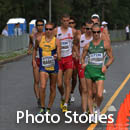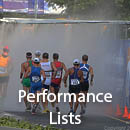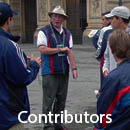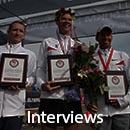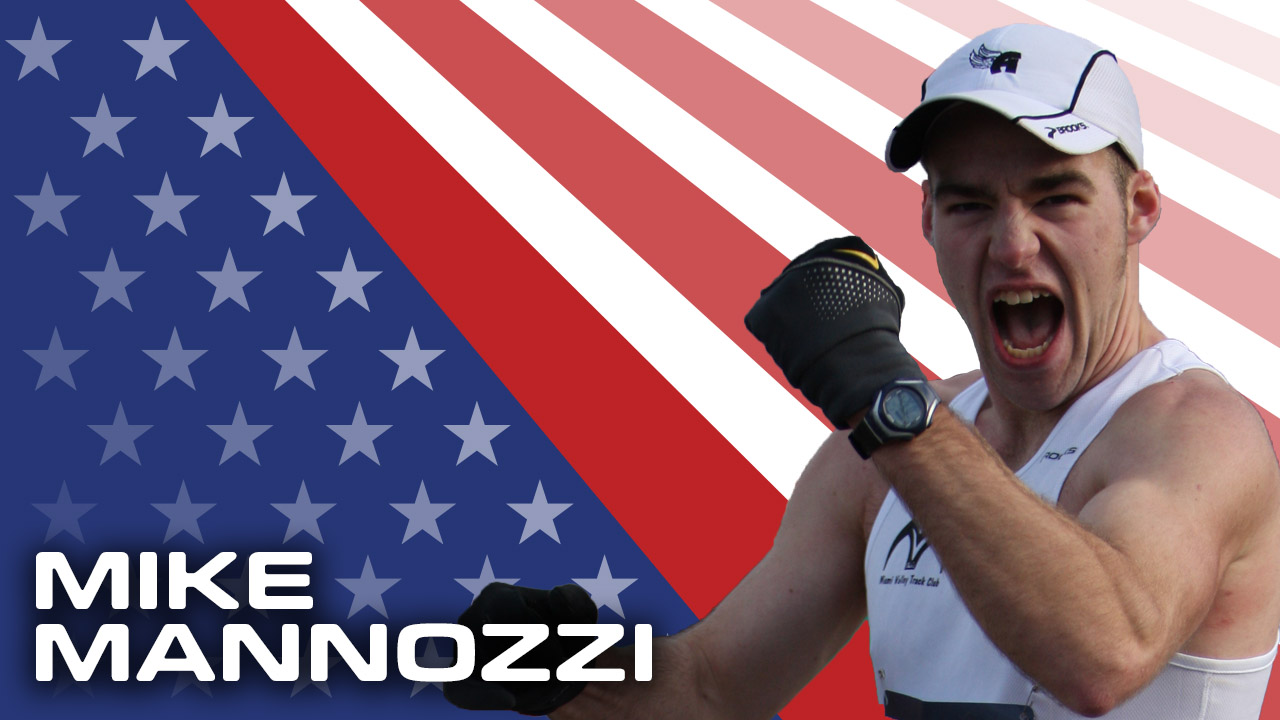
Personal Statistics
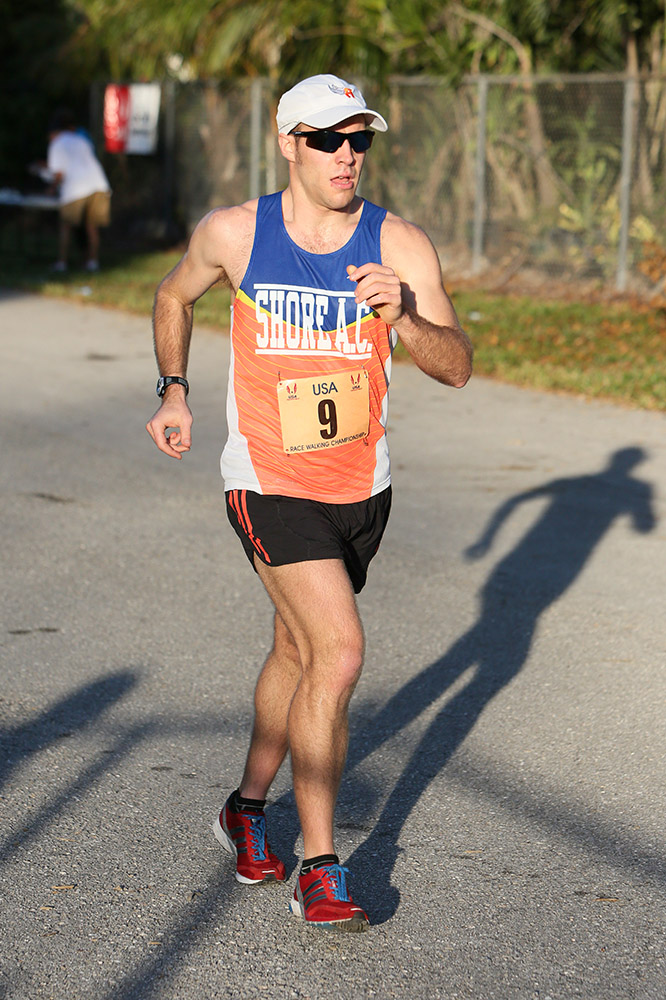
Hometown: Youngstown, OH
College: Notre Dame
PRS
Outdoors
50 km - 4:26:46
30 km - 2:27:29
20 km - 1:31:11
10 km - 44:30
5 km - 21:19
Indoors
3 km - 12:37
1 mile - 6:19.4
Michael Mannozzzi came from a diverse and unusual athletic background for a race walker. While he ran one year of track in high school, he played four years of high school football and wrestled for two years. Even in college he hadn’t focused on a single endeavor. He was a walk on for the Notre Dame College cross country team while also wrestling for the school as well as throwing the javelin a bit during track season. Amazingly, he also played a season of semi pro football at one point.
Since Mannozzi didn’t have a scholarship, he floated from event to event before giving race walking a try. At the time, Notre Dame was in the NAIA and the race walk was an event like any other in track and field.
His first big race was the 2008 NAIA Outdoor nationals. it was a 5,000 on the track. The race didn’t go as planned and Mannozzi was disqualified. Importantly though, he caught the attention of Vince Peters, an accomplished coach and promoter of race walking. Peters handed Mannozzi an application to the talent ID camp in Chicago. Mannozzi states, “Not sure a DQ had turned to benefit another athlete the way it impacted me at this point of my life.” He got the opportunity to work with race walking greats Philip Dunn, Diane Graham-Henry, Maryanne Daniel, Dave McGovern and the late Tom Eastler. “My understanding of race walking as well as my life perspective had begun to change forever,” credits Mannozzi.
The story was different two years later when at the 2010 NAIA indoor Nationals he was ranked second to the defending champion. Staying within striking distance he surged late to win the race. He made history for his college, family and himself. “Earning a national title ring was also a dream come true as I had been visualizing what it would be like since 2003 starting sports in high school. I used to wear a keychain ring, envisioning what it would be like to one day earn my own ring,” claims Mannozzi.
Mannozzi’s success continued when he won the 2012 Millrose Game in the closest race of the night. Mannozzi edged out Dan Serianni by 2 hundredths of a second to win in 6:19:40. He also won the 2012 Penn Relays which was special to Mannozzi as anyone from Pennsylvania knows the importance of the Penn Relays and it was the home state for his late father, grandparents and great grandparents.
Just qualifying for the Olympic Trials is an accomplishment in itself. Mannozzi’s performance at the 2016 50km Olympic Trials led to much more. He finished on the podium which led to a slew of benefits. It’s rare for prize money in race walking to count for much, but he was able to purchase his first car, help pay off some college debts and pay for immigration fees for his wife. The race also earned him a trip to the IAAF World Race Walking Team Championships in Rome, Italy. While there he became the first Mannozzi to connect with distant relatives in the last century. This spanned four generations.
Mannozzi’s focus shifted though as the role of dad became more important. He returned to Canada as a newcomer while his wife was pregnant with and gave birth to their second child just months later. Race walking had to take a bit of a backseat with a family of four, including more time invested for his eldest son who was diagnosed on the autism spectrum in 2018. They were all living in a single room. He spent a lot of time seeking a niche in the work force. This included time researching and applying for jobs on both sides of the border. Life was further complicated with the intricacies involved with sponsoring and seeking a co-sponsor for his wife while working in Toronto Canada to keep my family together. He trained as much as one could be expected, but missed a solid year of racing due to a lingering injury. He also lost his training partner, who had quit in 2017.
By the time the 2018 USATF 50km Nationals, many had accepted that his time at the national level was fait accompli. How could he blame them as he had questioned it himself? He trusted his coach in Marc Mundell, and respected the adverse conditions and knew the below zero temps in Canada were not preparing him for a 50k in the sun and heat. He relied on heart rate based off of his training. He raced in control and it payed dividends. The time was not superb, but this was a milestone finishing 3rd.
Mannnozzi typically trains with a long walk, a speed workout ( intervals of 500 meters, 1km or 2km) and one progressive workout during the week. The key workouts are based on speed or heart rate depending on the training phase. The three key workouts are supplemented by easy walking, or running sessions at a lower heart rate, and core work. When accessible he adds cross training in the form of swimming, biking, hiking to change it up during recovery.
His favorite workout is the long walk. He states, “it forces me to practice focusing on my mental cues for a longer duration, despite the distractions all around me and within me. Worries, doubts and the tugging of other responsibilities all must be put aside to focus on doing my best on the task, or in this case each kilometer, at hand as this is the time I have to do it and then it is done forever, just as each day is. I then parlay the mental framework and sense of accomplishment from accepting the challenge, overcoming all I do mentally and physically to the completion to into tackling obstacles in other areas of my life. This has helped me to function better with ADHD related challenges that have been a deterrent to my success and development for many years. Besides, I can enjoy refueling after.”
Mannozzi would still like to break 4 hours or “come as darn close as I can.” his ultimate goal is to make an Olympic team even if it is as team staff or a an official/race walk judge.
2018 – 9th 2017 – na 2016 – 8th 2015 – 8th 2014 – 7th 2013 – 6th 2012 – 6th 2011 – 6th
2017 – 2nd 2016 – na 2015 – 3rd 2014 – 4th 2013 – 6th 2012 – 9th 2011 – 6th
2016 - 5,000m 2015 - 5,000m 2014 - 5,000m 2013 - 5,000m 2012 - 1-Mile Championships
2016 - 40km 2016 - 5km 2015 - 30km 2015 - 40km 2015 - 1-Hour 2014 - 40km 2014 - 1-Hour 2014 - 5km 2013 - USATF 40km 2013 - 30km
2016 World Race Walking Team Championships ( Rome, Italy)
2015 Pan Am Race Walking Cup (Arica, Chile)
2014 Race Walking World Cup (Taicang, China)
2013 Pan Am Race Walking Cup (Guatemala City, Guatemala)
2011 Pan American Games (Guadalajara, Mexico)
